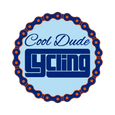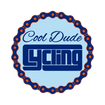Avoiding Common Bike Position Mistakes for Optimal Performance
Introduction
Cycling, whether for recreation, competition, or as a triathlete, demands not just strength and endurance but also the right posture and bike adjustments. Precise bike positioning plays a pivotal role in enhancing performance, ensuring comfort, and minimizing the risk of injuries. While many cyclists believe they've nailed the optimal position, a myriad of common mistakes can compromise their ride. Let's delve into these errors and provide insights on how to correct them.
Saddle Height and Positioning
Getting the saddle height right is more than just a comfort factor; it's about optimizing power and performance. When set too high, riders often find themselves reaching for the pedals, leading to an over extension of the legs. This not only strains the hamstrings but can also overly engage the calf muscles. Especially for triathletes, an incorrect saddle height can profoundly impact their subsequent running performance.
Yet, the challenges with saddle height don't end there. When the saddle is positioned too low, riders tend to exert more force than necessary, quickly fatiguing their quads. There's also the potential risk of joint pain due to the cramped position. To correct this, riders must find a balance where their legs have a slight bend at the bottom of each pedal stroke. This height ensures that they're engaging the right muscle groups without straining any particular set.
Beyond height, the saddle's horizontal positioning or its 'fore and aft' can also influence performance. If the saddle is too far forward, riders might find themselves leaning into the handlebars, placing undue pressure on their wrists and hands. On the other hand, if it's too far back, it can alter the rider's center of gravity, potentially leading to lower back pain. A correctly positioned saddle aligns the rider's knee over their pedal when the crank arm is horizontal, offering an optimal power transfer and minimizing strain.
Cleat Positioning and Its Subtleties
Cleats act as the primary connection point between the rider and the bike. Their positioning influences pedal stroke mechanics and, by extension, cycling efficiency. Yet, many riders overlook the nuances of cleat placement, leading to various discomforts and inefficiencies.
One fundamental aspect is the fore and aft positioning of the cleat. When positioned too far forward, the foot's ball might not align correctly with the pedal, leading to reduced power transfer. This misalignment can cause riders to adjust their foot angle, sometimes resulting in foot pain or even long-term injuries. Conversely, when the cleat is positioned too far back, riders may struggle with stability, and the risk of the foot slipping off the pedal increases.
Width and angle adjustments are just as crucial. Incorrect lateral cleat positioning can lead to the rider's foot catching on the bike frame, especially with today's wider frame designs and disc brakes. Additionally, if the cleat angle isn't tailored to the rider's natural foot angle, it can lead to knee pain or even long-term joint issues.
It's paramount for cyclists to understand that cleat positioning isn't a one-size-fits-all. Everyone's biomechanics are unique. Therefore, getting the right fit often involves trial and error, coupled with an understanding of how different adjustments affect cycling dynamics.
The Intricacies of Reach and Stability
Bike reach, referring to the distance from the saddle to the handlebars, plays a pivotal role in a rider's comfort, efficiency, and control over the bicycle. However, it's one of the aspects that's often misjudged. A reach that's too short can make the rider feel cramped, limiting their ability to produce power, while a reach that's excessively long can stretch the rider out, leading to shoulder and back discomfort.
An important nuance is the balance between reach and bike stability. For instance, a longer reach might offer a more aerodynamic position, but it could compromise control, especially during long rides where fatigue sets in. Triathletes, often transitioning between swimming, cycling, and running, need to be especially cautious. A neutral, seemingly safe position might feel comfortable initially, but it can induce unnecessary fatigue over time. Cyclists should aim for a position that balances aerodynamics with comfort, ensuring they can maintain it for the duration of their ride or race.
The Nuances of Front End Positioning
The bike's front end, especially its height relative to the saddle, significantly impacts a cyclist's aerodynamics, comfort, and visibility. Many riders, in their quest for a sleek profile, often adopt an extremely low front end, believing it to be the most aerodynamic stance. While this might reduce wind resistance, it isn't always the best position for performance or comfort.
An ultra-low front end can strain the neck, shoulders, and back, especially during longer rides. It can also force riders into a closed hip angle, reducing their pedal power. On the contrary, a slightly raised front end, in many cases, can be more aerodynamic. It allows the rider to maintain a better flow between the helmet and the back, enhancing the bike's ability to cut through the air efficiently.
The introduction of adjustable poles in modern bike designs further emphasizes the importance of fine-tuning the front end's height. By finding the perfect balance between aerodynamics and comfort, cyclists can maximize their speed without compromising on their well-being.
Decoding Pain Indicators and Their Solutions
Every cyclist, at some point in their journey, has experienced discomfort or pain during or after a ride. While it's easy to dismiss these as mere signs of fatigue, they often serve as critical indicators of incorrect bike positioning. Recognizing these pain patterns can guide riders towards the necessary adjustments.
Using these pain indicators as a guide can drastically improve the overall riding experience and reduce the risk of long-term injuries. It's essential to approach these symptoms proactively. Instead of merely enduring the discomfort, cyclists should view these signs as an opportunity to refine their setup and technique.
Such refinements don't always necessitate major changes. Sometimes, minor adjustments can result in significant comfort improvements. For example, shifting the saddle a few millimeters or adjusting the angle slightly can alleviate undue pressure points. Similarly, repositioning the cleats by a small margin might reduce foot pain.
It's also worth noting that as a rider's fitness level and flexibility evolve, their bike setup might need periodic re-evaluations. What felt comfortable a year ago might not be optimal today. Engaging in regular bike fits, especially after significant training milestones or after any physical injuries, ensures that the bike setup evolves in tandem with the rider.
Lastly, while self-assessment and adjustments can go a long way, consulting a professional bike fitter can provide insights that are tailored to individual needs. They can offer expertise on biomechanics, aerodynamics, and ergonomics, ensuring every ride is as efficient and comfortable as possible.
Front End and Aero Positioning
In the world of cycling, aerodynamics is king. Achieving the optimal balance between a rider's comfort and aerodynamic efficiency can mean the difference between seconds or even minutes during a ride. Many riders, in pursuit of aerodynamic advantages, often slam their front ends, drastically lowering their handlebars in relation to their saddle. However, this might not always yield the best results.
Modern bike fitting paradigms suggest that sometimes, a slightly raised front end can be more beneficial. By optimizing airflow between the helmet and the back, riders can enhance their aerodynamic profile. It's not just about being as low as possible; it's about achieving a streamlined flow that allows cyclists to cut through the air efficiently. These adaptations, paired with suitable equipment like aerodynamic helmets or skinsuits, can collectively contribute to significant time savings during rides.
Pain Indicators for Bike Fitting
Understanding one's body is crucial for every cyclist. While professional athletes have teams of physiotherapists and coaches analyzing every ache and pain, amateur cyclists often need to be their own best advocates. Recognizing the common pain indicators associated with poor bike fit can guide riders towards a more comfortable and injury-free cycling experience.
For instance:
- Burning in the quads might indicate a saddle that's set too low.
- Hamstring discomfort can suggest a saddle height that's too high.
- Foot discomfort or hot spots could be attributed to incorrect cleat positioning.
- Shoulder strain or burning sensations can be linked to pad positioning or the height of handlebar extensions.
- Numbness in the hands might be a sign of incorrect brake positioning or an unsuitable stem reach.
By attending to these indicators, riders can preemptively address potential issues, refining their setups for better performance and comfort.
The Art of Individualized Bike Fitting
One of the key takeaways in bike fitting is understanding its deeply individualized nature. While there are general guidelines and principles, there isn't a one-size-fits-all solution. Cyclists come in various shapes and sizes, possess different levels of flexibility, and have unique biomechanics. These factors play a critical role in determining the ideal bike setup for an individual.
Many riders look at professionals or peers and try to emulate their setups. While this can serve as a starting point, it should not be the final benchmark. What works for one cyclist might be detrimental to another. For example, a professional cyclist might ride with a highly aggressive and aerodynamic position that an amateur rider might find uncomfortable or unsustainable.
It's imperative to listen to one's body and not be swayed solely by trends or what others are doing. If a rider is struggling with their current setup, seeking a proper bike fitting from a professional is an excellent step. Often, small changes in one area can transform the entire feel of a bike, leading to improved efficiency, comfort, and enjoyment on the saddle.











